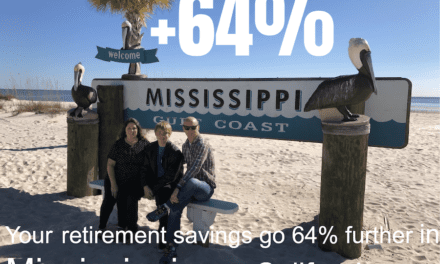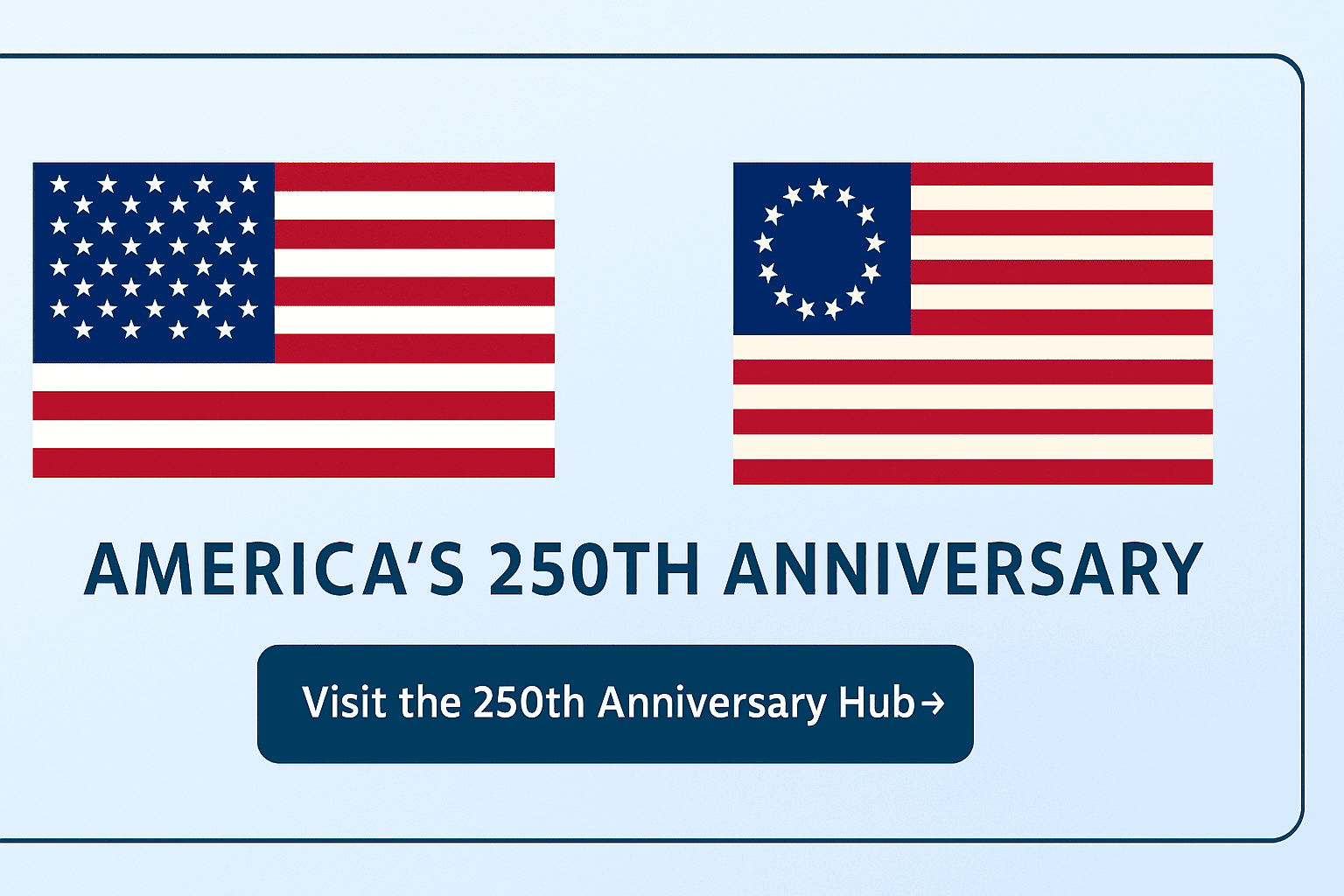Last updated on March 30th, 2025 at 06:37 pm
Save up to $69,000 tax-free. As a Gen-Xer and self-employed business owner, you can save up to $69,000 per year pre-tax How will you retire without a good plan and financial security? You need to create a self-employed 401(k) retirement plan with all of the benefits you had with your old employer and more. As a Gen-Xer and self-employed business owner, you can save up to $69,000 per year pre-tax. Zero program fees. Save for retirement at the same time reduce your income tax bill. Best of both worlds.
There are a few choices but I am going to steer you to the “Solo” 401(k) plan and explain why. Your 401(k) is key to your retirement strategy. Only 34% of small business owners have a 401(k) plan.
Of course, you must file your income tax return in order to qualify for 401(k) plans as the amount of your income is a determining factor on how much your business can contribute to the plan. I mention this because many self-employed individuals are earning “under the table” and they are not participating in the legal economy.
Countdown to Retirement
"The Best Self-employed Retirement Plans for Gen-Xers 2025" is #6 in the series Generation X 20 Years to Retirement Series. Be sure to read all of the articles. Click the button at the bottom for the series and also join our interest list in a new educational course "Generation X Preparing for Retirement"

Many have enough deductions to cover the tax liability
This is the time for you to get going with accounting for income and expenses. Many independent contractors and self-employed workers have sufficient deductions to cover much of their tax liability. The other thing you need to consider is paying into Social Security. I will get into this later.
Actual 401(k) plans are considered qualified plans. You can open a simple IRA plan but it is not a qualified plan. Understand that as a self-employed person, small businesses are subject to all types of liability. For example, you mow yards.
A rock is thrown from your lawn mower and it breaks a stained glass window worth thousands of dollars. The property owner sues you for replacement. It's possible that a judge will award damages and attach your IRA because it is not a qualified plan.
IRS 401(k) Plan Rules
Contribute up to an additional 25% of your net earnings from self-employment for total contributions of $66,000 for 2024
No judgements against a 401(k) plan
Qualified retirement plans (401(k) prevent judgments against your funds in that plan under all circumstances. The money you have put in that plan even if your business goes under and you are sued for everything else you own will still be there. This is why it's critical that you don't use a regular savings account, CDs, or even a regular IRA to save money.
The 401(k) regardless of the type of 401(k) is protected. Before I go on, just a reminder that you should obtain a liability insurance policy for your business. Protect your assets by setting up an LLC or other legal entity. If you would like more information about this topic, check our blog site for articles on the topic.
I am making an assumption here that your business has no employees. So the Solo plan is ideal for you and your spouse. If you do expect to have employees in the near future, there are other options. If you decide you will not have employees and decide later that you want to hire people, you can create a different type of 401(k) or Individual Retirement Account or IRA.
There are a variety of self-employed retirement plans which we will touch on later in the article but for now, the focus should be on you and your first 401(k) plan.

Move an old 401(k) to the new "solo" plan
Self-employed people are eligible under the law to set up their own Solo plan which as I mentioned will cover you and your spouse. The rules for a solo plan are nearly the same as a plan you may have had at a previous employer. FYI, if you have 401(k) funds with the former employer's provider, you can make arrangements to move those funds over to your new Solo account.
This is something your new provider must do directly with your previous provider. Never take possession of your 401(k) funds, even having a check made payable to you will trigger tax events.
The basics of a sole proprietorship "Solo" or "Individual retirement accounts" plan are as follows:
- The plan is funded by a combination of employee (you) salary deferrals and company profit-sharing (you as well).
- A plan document is required by the IRS and they take responsibility for reporting.
- Contributions are tax deductible and taxes on earnings are deferred until you start withdrawing funds. Before age 59.5 there are taxes and fees, after 59.5, only ordinary income tax is paid
- Larger contributions can be made to this plan vs some others such as the SEP-IRA plan designed for employers with employees
- You may borrow from your funds (I don't recommend it except for assets such as a house).
- Annual contribution limits apply up to $22,500 (increases each year).
- Annual profit-sharing contributions can be made by your employer (your company) of up to 25% of your compensation or 20% of your net self-employment income.
- An employer may contribute up to $30,000 or any amount as long as the total contributions can not exceed $69,000. If you are age 50 or older the limits are higher with catch-up contributions
Contribute up to $66,000 per year combo of you and you
As you can see from the information above, the plan is similar to the one you may have had at an employer. The beauty of this Solo (self-employed retirement) plan is that you can contribute up to $66,000 and higher if you are over 50. And, the contributions are tax-free. What a great gift for a small business.
The high contribution limits for the business contribution puts you ahead of your last employer plan. This is actually how the program works:
- You have a net income of $5,000 in January. This is after paying all of the bills but before you have paid any taxes.
- You have decided that you will contribute $1,000 leaving you with $4,000 net income
- The business will contribute $1,000 leaving you with $3,000 net income
- This means that only $3,000 of the business's net income is subject to federal income taxes
- You have effectively sheltered $2,000 and started to save for retirement.
Of course, you can increase the amounts that you personally contribute or that the business contributes based on your business income. If for example, you know that you are having a very large month with a big net profit, you can make much larger contributions as long as you follow the rules above. The rules do not prevent maximizing your contributions in a single month.

Tax planning is part of self-employment retirement planning
Years ago when I was in business (an incorporated company), I was paying out a bonus in January. My entire bonus went to the 401(k) plan and I was able to max it out in January for the entire year. The good thing was that the money worked all year rather than making bi-weekly payroll contributions.
Tax planning is part of retirement planning for all Gen-Xers. Deferring taxes for self-employed persons is a great way to increase your take-home income. As an example, assume that you have earned enough net income to make the entire $66,000 joint contributions.
Federal income tax on $66,000 in taxable income at 20% equals $13,200. This means that you have an additional $13,200 to invest in your business or invest in a brokerage account. This plan stands out because of the large employer contributions. Back to filing income tax returns and claiming income from your business. These tax benefits only apply of course where there is reported taxable income.
Want to improve upon our own Individual or Solo 401(k)? Have your spouse join you and open an account. A spouse will be considered to be a full-time employee for purposes of this program. While you can't have other employees there is an exception for a wife. This will permit you to double your maximum savings.
Work with your CPA to maximize the tax advantages
The IRS would permit each of you (in 2025) to make $69,000 in contributions (plus $7,500 more in catch-up contributions for those 50 or older), for a total of $138,000 per year. This is of course assuming the maximum individual contribution for each of you plus the annual maximum company contribution. This is the best plan if your business is very profitable.
Working with a good CPA to develop a financial plan, you can take advantage of self-employment tax law and shield some of your income from taxes. The self-employed 401(k) retirement plan is not the only tax break for the self-employed. Being your own boss comes with some responsibilities and that means keeping good records and not paying more tax than is required by law.
All of the best retirement plans have at their heart a 401(k) or Roth IRA. There are some great strategies for earning more retirement savings through basic planning. This brings me to Social Security. Many self-employed persons have not been contributing to Social Security.
You must contribute 12.4% of your gross income to Social Security and 2.9% to Medicare. If you were working for someone else, your contribution would be half and the employer would pay the other half.
Create a company, LLC to protect your assets
One reason for creating an LLC is to issue payroll checks to yourself after deducting the 401(k) allowance ( a w2 employee). Another is to pay 1/2 of Social Security and Medicare in your paycheck and have the company pay the other half which would then be fully deductible.
The bottom line is that you pay income tax on the amount you pay into Social Security but the company does not. And last, should another COVID situation arise, you could become eligible for that free money that Congress gave to employers to keep their employees going.
To have become eligible, your company would have to have paid you as a W2 employee.
It may seem by now that I am getting into some strategy for your business, straying from the original intention, 401(k). Yes and no. Being in business for yourself also makes you an eligible employee. It's important to talk about both sides. It may be hard to get your head around the fact that you are the owner and also an employee.
An LLC is a person
The IRS recognizes an LLC as a separate person because you have a state charter. This is why your company can make a matching contribution.
Back to the basic 401(k) self-employed retirement plan. Set up your plan with a provider. There are many companies that can provide a 401(k) plan. The important things to look for are as follows:
- What's the cost of administrating the plan?
- Transaction fees
- Will they complete all of the reporting requirements to the IRS?
- Types of funds and investments available
- How will my spouse be able to set up a plan?
- Minimum required deposit
- Fees to borrow funds
- Provide investment advisor-type assistance with selections
- Can they set up an automatic draft to get funds from your account?
Want to create an LLC, RetireCoast can help. Check out this article.

Check out this 401(k) provider
As I mentioned there are a number of providers for 401(k) self-employed retirement accounts and without a doubt several will perform well. The good news is that I am going to recommend one that I have been with for 40 years. Charles Schwab. There are no fees charged to start and maintain your 401(k) self-employed retirement program. They will also accept funds from old 401(k) plans and pre-tax IRAs.
Charles Schwab has an excellent website where you can learn about anything you need to know about investing. Use this link. If you start a plan with Charles Schwab, they will compensate me. I would not recommend this company if my experience with them for both personal and business was less than outstanding.
Make contact through the link and they will take you through the entire process. Before you attempt to open an employer-sponsored retirement plan, you will need to make the following decisions:
- Are you a sole proprietor or an LLC (or another entity)?
- If you are going to set up an LLC, do it first.
- Obtain a Federal Tax ID number for our LLC, you will need it to open your account.
- Be prepared to provide information about the checking account the funds will come from. Open a business account first. If an LLC, you will need the Federal Tax ID number first.
- Be prepared to provide if requested a copy of the Articles of Organization. This is a document that contains the bylaws of the LLC, who owns what percentage etc.
- Determine if your spouse will be on the plan or as a beneficiary.
- Will your spouse be creating a plan?
Your 401(k) plan provider can help with documents
There are many documents required to open a 401(k) self-employed retirement plan. The process can seem daunting. Much is boilerplate because the majority of rules imposed upon your business for the self-employed plan are created by the IRS. There is a report that you will be required to submit on an annual basis when the plan assets exceed $250,000.
Save just $1,000 per month for the next 20 Years
| Year | Starting Balance | Annual Deposit | Interest Earned | Ending Balance |
|---|---|---|---|---|
| 1 | $12,000.00 | $12,000.00 | $840.00 | $24,840.00 |
| 2 | $24,840.00 | $12,000.00 | $1,739.80 | $38,579.80 |
| 3 | $38,579.80 | $12,000.00 | $2,698.59 | $53,278.39 |
| 4 | $53,278.39 | $12,000.00 | $3,725.49 | $69,003.87 |
| 5 | $69,003.87 | $12,000.00 | $4,830.27 | $85,834.13 |
| 6 | $85,834.13 | $12,000.00 | $6,023.39 | $103,857.52 |
| 7 | $103,857.52 | $12,000.00 | $7,315.03 | $123,172.56 |
| 8 | $123,172.56 | $12,000.00 | $8,715.08 | $143,887.64 |
| 9 | $143,887.64 | $12,000.00 | $10,233.14 | $166,120.78 |
| 10 | $166,120.78 | $12,000.00 | $11,878.46 | $190,999.24 |
| 11 | $190,999.24 | $12,000.00 | $13,661.94 | $218,661.18 |
| 12 | $218,661.18 | $12,000.00 | $15,561.28 | $247,222.46 |
| 13 | $247,222.46 | $12,000.00 | $17,598.57 | $277,821.03 |
| 14 | $277,821.03 | $12,000.00 | $19,784.47 | $310,605.50 |
| 15 | $310,605.50 | $12,000.00 | $22,129.39 | $345,735.89 |
| 16 | $345,735.89 | $12,000.00 | $24,644.51 | $383,380.40 |
| 17 | $383,380.40 | $12,000.00 | $27,341.63 | $423,722.03 |
| 18 | $423,722.03 | $12,000.00 | $30,233.54 | $466,955.57 |
| 19 | $466,955.57 | $12,000.00 | $33,334.90 | $513,290.47 |
| 20 | $513,290.47 | $12,000.00 | $36,661.34 | $563,951.81 |
The benefits of time, 20 years to retirement, and see how much you can save with as little as $1,000 per month contributed to a single 401(k) plan. Add your spouse and double that amount. Better yet, deposit more than $1,000 per month as your business grows. Your future self will thank you.
Now a bit about the Roth IRA. The IRS has a total limit on what you can put away for retirement. This includes your 401(k) and any Roth IRA that you have. The limit was discussed above. Why would you want a Roth IRA and a 401(k)? The 401(k) allows contributions on a tax-deferred basis while the Roth contributions are made after taxes have been paid.
Years later when you start to take distributions from your 401(k) plan, the amounts will be subject to federal income taxes. That's right, you deferred the taxes during your working years to take them later in life.

Distributions from a Roth IRA are ALWAYS tax-free
Distributions from your Roth IRA will always be tax-free including interest, dividends, and profit from the sale of equities. In other words, with this type of account (Roth), you will never be taxed on any income it generates. There are no minimum distributions required and you can continue contributing after you are retired. You can make early withdrawals of principal under certain circumstances before you reach age 59.5.
Where is the catch? There are some rules about how long the interest and dividends must be in the account for a tax-free withdrawal. Check out the IRS page for more details, rules are subject to change.
Once again, the maximum contribution amount to your Roth IRA will be the IRS maximum at the time for all retirement accounts.
If you set up both a Roth IRA and an Individual 401(k) self-employed retirement plan, you will have to decide how much to contribute to each. Make sure that you maximize your tax benefits and at the same time balance your need for future tax-free income.
Remember, your spouse can set up a plan as well which will increase the amount your family can contribute. Of course, this means that your business needs to generate lots of dollars in profits to take advantage of this tax deferral.
Self-employed Gen-Xers learn more about self-employment
There are other articles on this blog that can help you not only plan for retirement as a self-employed Gen-Xer but as a business person. One of our popular ones is https://retirecoast.com/handymen-you-should-report-business-income-to-the-irs/
Read our entire series on Generation X 20 Years to Retirement. Click the button below which take you to our Series page where you can select from any one of several Generation X 20 Years to Retirement topics. Don't miss an article, sign up on the top right to receive notice of all future articles.
FAQ: The Best Self-Employed Retirement Plans for Gen-Xers
1. What are the best retirement plans for self-employed Gen-Xers?
Self-employed Gen-Xers can choose from options like a Solo 401(k), SEP IRA, SIMPLE IRA, and Roth IRA. Each plan offers unique benefits depending on your income, savings goals, and tax strategy.
2. Why should self-employed Gen-Xers consider a Solo 401(k)?
A Solo 401(k) is an excellent choice for those with no employees other than a spouse. It allows both employer and employee contributions, providing higher contribution limits compared to other retirement plans.
3. How does a SEP IRA work for self-employed individuals?
A SEP IRA (Simplified Employee Pension) is designed for small business owners and offers a straightforward, low-cost way to save for retirement. Contributions are tax-deductible and the plan is easy to manage.
4. Can self-employed Gen-Xers contribute to a Roth IRA?
Yes, if your income is within the IRS limits. A Roth IRA offers tax-free growth and withdrawals in retirement, making it a great option for those who expect to be in a higher tax bracket later.
5. What are the benefits of a SIMPLE IRA for Gen-Xers?
A SIMPLE IRA (Savings Incentive Match Plan for Employees) is ideal for self-employed individuals with a small business and a few employees. It offers lower contribution limits than a Solo 401(k) but provides employer-matching contributions.
6. How much money can Gen-Xers contribute to their self-employed retirement plans?
Contribution limits vary by plan. For example, in 2024, the Solo 401(k) limit is $69,000 for those under 50, plus a $7,500 catch-up for those 50 and older. SEP IRAs allow contributions of up to 25% of your net earnings.
7. What is the tax advantage of using a traditional IRA or SEP IRA?
Contributions to traditional IRAs and SEP IRAs are tax-deductible, reducing your taxable income. This can be beneficial for self-employed Gen-Xers aiming to lower their tax bill.
8. Can self-employed Gen-Xers have multiple retirement accounts?
Yes. You can combine different plans, such as contributing to a Solo 401(k) while also funding a Roth IRA, as long as you stay within the IRS contribution limits.
9. How can self-employed Gen-Xers catch up on retirement savings?
Gen-Xers in their late 50s can take advantage of catch-up contributions. Most plans, including 401(k)s and IRAs, offer additional contribution allowances for those aged 50 and above.
10. Are there penalties for withdrawing from self-employed retirement plans early?
Yes. Early withdrawals from most retirement accounts before age 59½ typically incur a 10% penalty in addition to regular income taxes. Roth IRAs may allow contributions (but not earnings) to be withdrawn penalty-free.
11. Should Gen-Xers consider working with a financial advisor?
A certified financial planner or financial advisor can provide personalized investment advice, help you maximize your retirement savings, and create a tax-efficient withdrawal strategy.
12. What happens to your retirement savings if you close your business?
Your retirement savings remain yours even if your business closes. You can roll over funds into an IRA or another qualified retirement account to continue growing your nest egg.
13. Can Gen-Xers with side businesses open a retirement plan?
Yes. Even if you have a full-time job with a retirement plan, you can open a Solo 401(k) or SEP IRA for your side business to maximize your savings.
14. How can self-employed Gen-Xers plan for healthcare costs in retirement?
Consider contributing to a Health Savings Account (HSA) if eligible. HSAs offer triple tax advantages and can be used for qualified medical expenses in retirement.
15. When should self-employed Gen-Xers start planning for retirement?
The best time to start is now. The sooner you begin contributing to a retirement plan, the more time your investments will have to grow, ensuring a more comfortable lifestyle in your golden years.
Discover more from RetireCoast.com
Subscribe to get the latest posts sent to your email.









